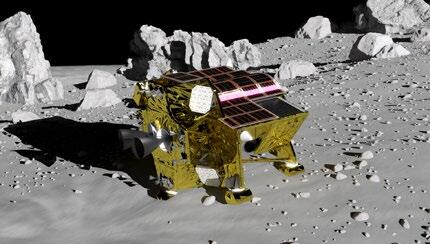On Jan. 19, the Japan Aerospace Exploration Agency (JAXA) successfully landed two lunar rovers, LEV-1 and LEV-2, on the moon with the Smart Lander for Investigating Moon (SLIM) lander. This made Japan the fifth country—preceded by the US, Soviet Union, China, and India—to successfully land a spacecraft on the moon.
The SLIM lander is touted for its precise landing system, which achieved an accuracy of a mere 100 meters. This is a significant improvement compared to lunar landers from other countries, which achieve accuracies in the kilometers.
While the SLIM landed successfully, JAXA reported that the solar cells were unable to generate electricity to charge its batteries. The SLIM eventually reached a battery level of twelve percent, causing the power system to shut down to prevent an over discharge. JAXA claims that the solar cells are facing west, so if the sun were to shine on the moon from the west, there may be a possibility that the SLIM will recharge its batteries.
JAXA was able to retrieve the images the SLIM took before it shut down. They plan on analyzing and releasing the data to the public in the near future.
“Although it is disappointing that the SLIM shut down not long after landing, it is exciting to see more progress being made to explore the moon,” Ian Park (12), aspiring aerospace engineer, said. “I hope that future lunar missions can adopt SLIM’s new technology to better explore the moon.”


